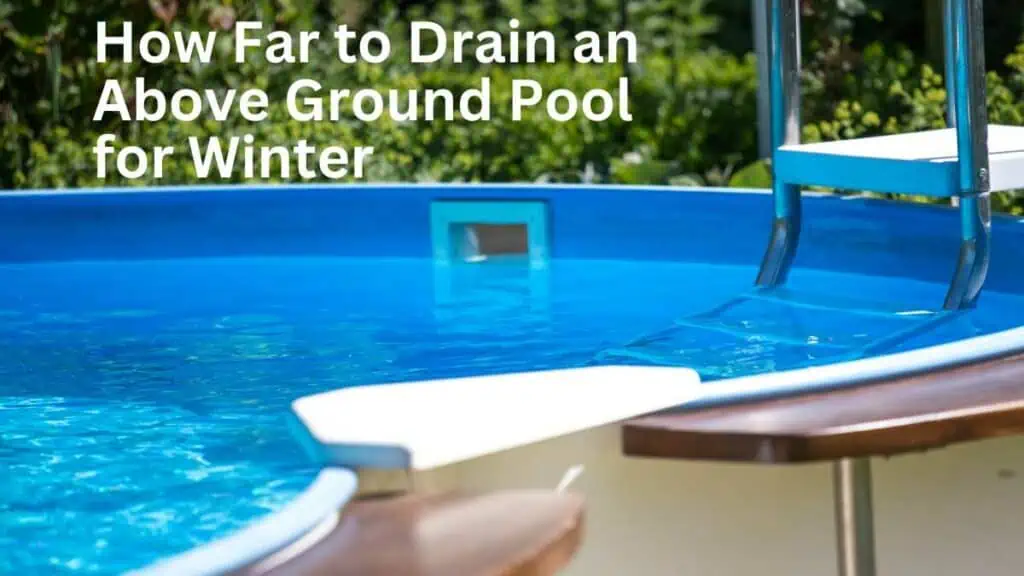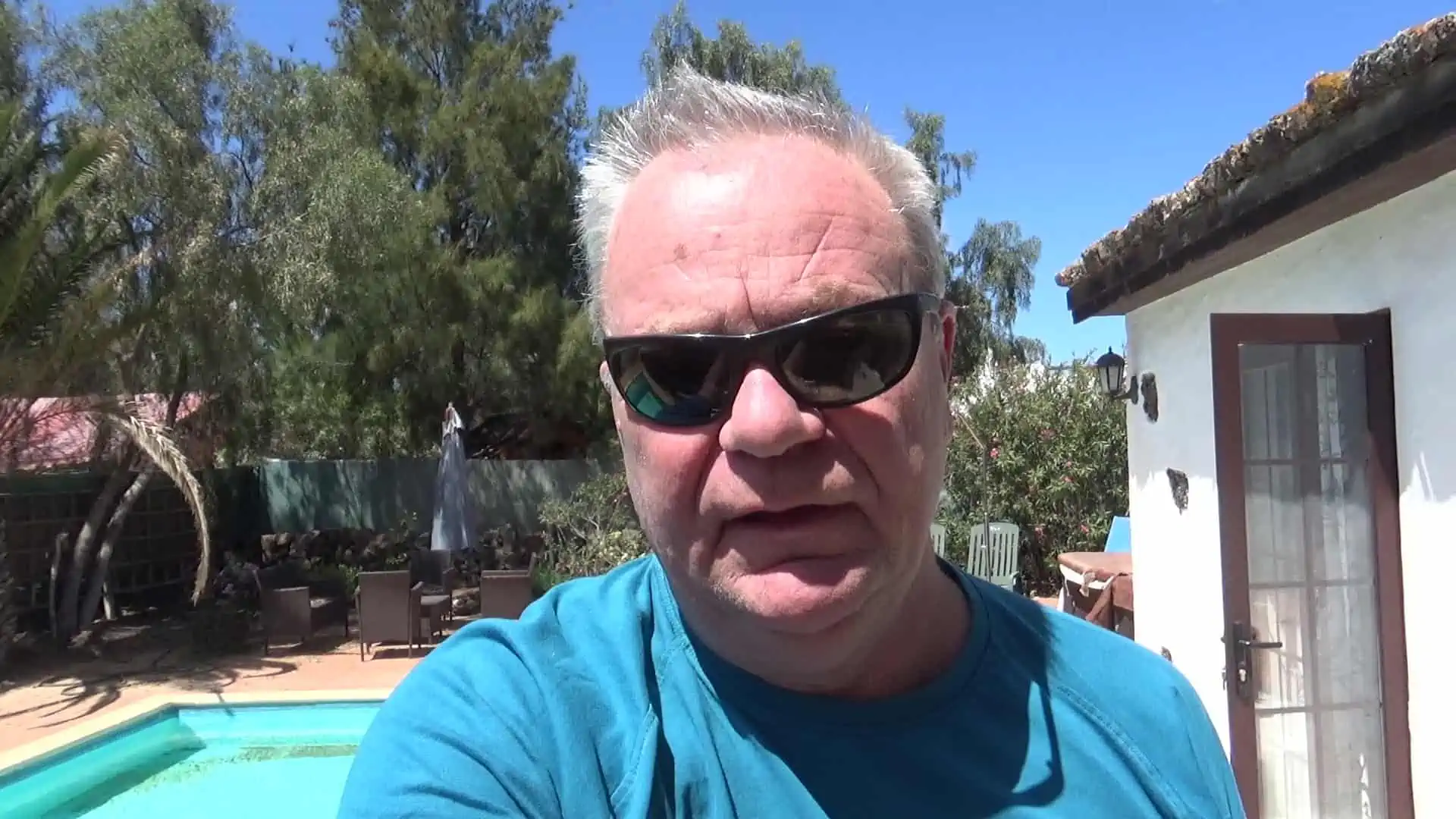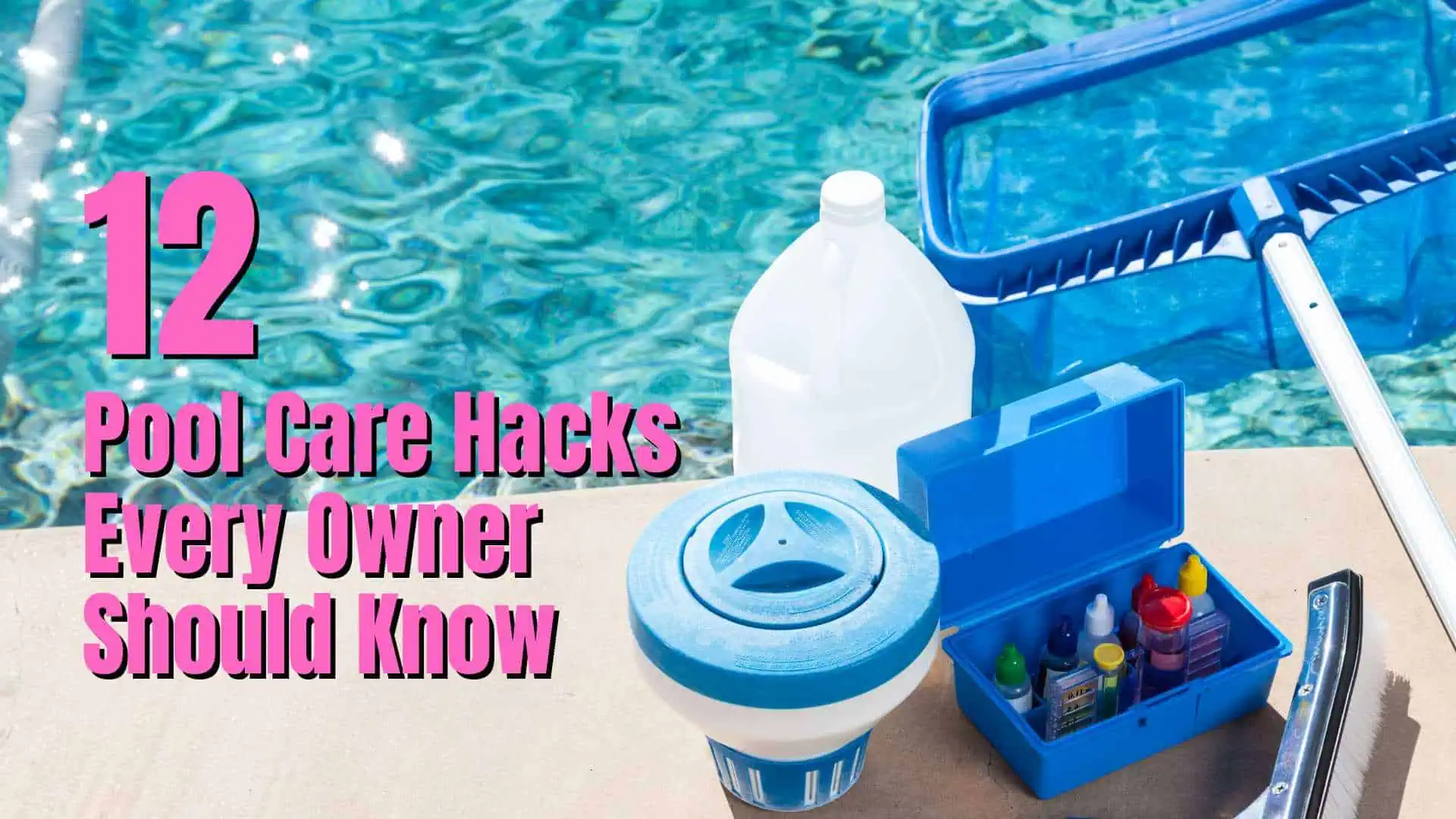As the winter season approaches (sadly), it’s crucial to prepare your above ground pool for the freezing temperatures, assuming you live in an area with such a cold climate of course.
One key aspect of winterizing your pool is determining how far to drain the water.
Draining your pool the correct amount can help prevent damage to the liner, walls, and skimmer, as well as reduce the risk of frozen pipes. With the right guidance and preparation, you can ensure your pool remains in optimal condition throughout the chilly season.
In this article, we will explain how far below skimmer to drain pool for winter for various types of above ground pools.

Why Drain an Above Ground Pool for Winter?
Draining an above ground pool for winter is important for a number of reasons.
First and foremost, it helps protect your pool from potential damage caused by freezing temperatures. When water freezes, it expands, and this expansion can cause stress on your pool’s structure and liner.
By lowering the water level, you reduce the risk of the pool liner stretching or tearing due to ice expansion. Additionally, properly draining your pool prevents damage to the skimmer and other essential components.
A lower water level also minimizes the chances of the water infiltrating and interfering with the pool cover, which could lead to it sagging or tearing.
How Far to Drain Your Pool
When preparing your above-ground pool for winter, it is important to drain the water appropriately. Draining your pool completely is not advisable, as it can leave dirt and debris in the bottom of the pool after winterizing and also the vinyl liner could become damaged if it dries out.
There are a couple of methods you can use to drain your pool.
- One option is to use a submersible pump, which involves connecting a hose to the pump and directing the water away from the pool area.
- Another option is to use a siphon, taking advantage of gravity to create suction and pull water out of the pool.
When determining how far to drain your above ground pool for winter, there are a few key factors to consider.
Type of Cover
It is important to take into consideration the type of pool cover you will be using.
If you are using a floating cover, you should drain the water level to about 6 inches below the skimmer or the bottom of the returns.
If using a standard non-porous winter cover then remove enough water so that the level is approximately 6 inches below the skimmer.
If you opt for a mesh cover, you can drain the water up to 12 inches below the skimmer as you have to allow for winter rain to fill the pool through the cover. With a mesh cover, you may need to pump out some water if the level increases up to the skimmers and returns.
Pool Size and Material
One of the primary factors that will impact the draining distance for your above ground pool is the type of pool you have.
There are two main types of above ground pools: steel and fiberglass. Steel above-ground pools usually require more water removal because they are not as strong as fiberglass pools.
For above-ground pools with a vinyl liner, it is generally suggested to drain the pool between 4 and 6 inches below the bottom of the skimmer mouth. This ensures that there is enough space for water to expand and contract during winter.

Preparing Your Pool for Winter
Cleaning and Chemical Treatment
Before winterizing your above-ground pool, it’s essential to thoroughly clean it.
Begin by removing any leaves or debris that have accumulated on the surface and at the bottom of the pool. Ensure that the pool is free of algae by scrubbing the walls and floor with a pool brush.
Next, check and balance your pool water chemistry. To protect your pool during winter, ensure that the pH level is between 7.2 and 7.6, alkalinity is between 80 and 120 ppm, and calcium hardness is between 180 and 220 ppm.
Once your pool water is balanced, add a winterizing chemical kit or winter pool pill to further prevent algae growth and corrosion of equipment.
Pool Cover Installation
Installing a pool cover is a crucial step in preparing your pool for winter. A high-quality winter cover will protect your pool from debris, leaves, and snow during the cold months.
Before installation, make sure the cover is clean and free of damage. Then, securely fasten the cover over the pool, making certain that it is tight and properly anchored. This will prevent it from sagging under the weight of snow and ice.
Read my article Best Above Ground Pool Winter Covers if you don’t have one.
Place an air pillow underneath the cover in the center of the pool. This helps to distribute the weight of snow and ice evenly across the cover, reducing the risk of damage. It also allows ice on the surface of the pool to “squeeze” the pillow rather than squeeze the sides of the pool which might damage it.
Other related articles you might find useful:
Can You Leave Steps in Above Ground Pool for Winter?
How to Winterize an Above Ground Pool
Pool Winterization Video Course
Save over $300 a year by closing and winterizing your pool yourself using Swim University’s step-by-step video course. It covers closing both inground and above ground pools.
EXCLUSIVE OFFER to visitors of this site
Use the discount code EASY10 at checkout to save 10% on this Swim University course.

Frequently Asked Questions
Should I drain my above ground pool for winter?
It depends on the type of pool you have and the climate you live in but generally it is not recommended to drain your above ground pool for winter. Instead, you should winterize your pool by balancing the water, adding winterizing chemicals, protecting your pump and filter, and covering your pool.
Do I need to store small above ground pools away for winter?
If your above-ground pool is smaller than 20 by 40 feet and made of plastic, it’s best to disassemble and store it away for winter. However, if you have a metal-framed pool, this step is not necessary.
What steps do I need to take to winterize my pool area?
Begin by removing all pool accessories, toys, and ladders. For in-ground pools with anchored covers, set the folded cover at one end of the pool and back out a few anchors in the concrete, securing a few of the cover straps.
How can I prevent winter damage to my above ground pool?
- Keep excess water off your winter cover.
- Prevent leaves from piling up.
- Clean off snow buildup regularly.
- Use an ice equalizer pillow to prevent ice damage.
- Monitor water levels for rapid changes.
- Address any pool buckling immediately.
Once your pool is closed you may want to consider buying an inflatable hot tub so you can continue your soaking fun until next spring.

I have had hot tubs for over 20 years and a pool for the last 10 years. I had to learn how to clean, maintain and fix them the hard way. Since then I have helped many friends and neighbors with their pools and now I want to share everything I have learned with you. About Me



